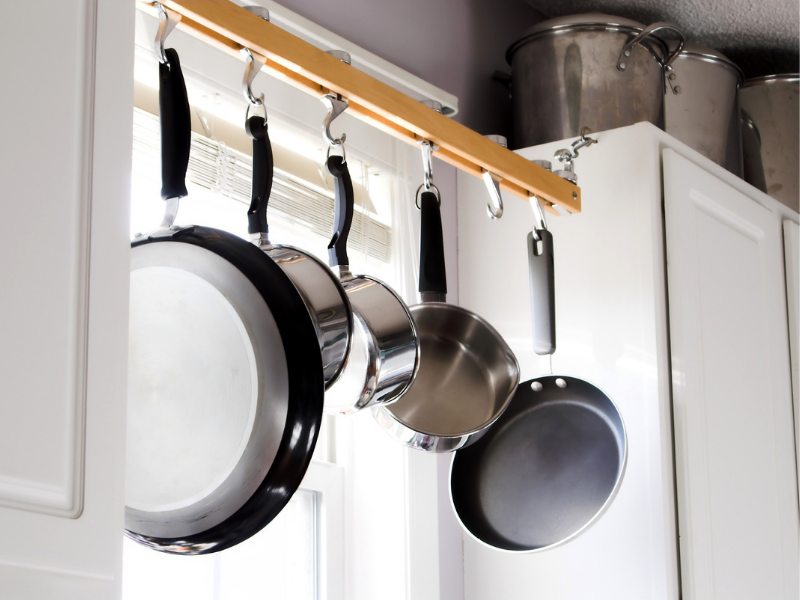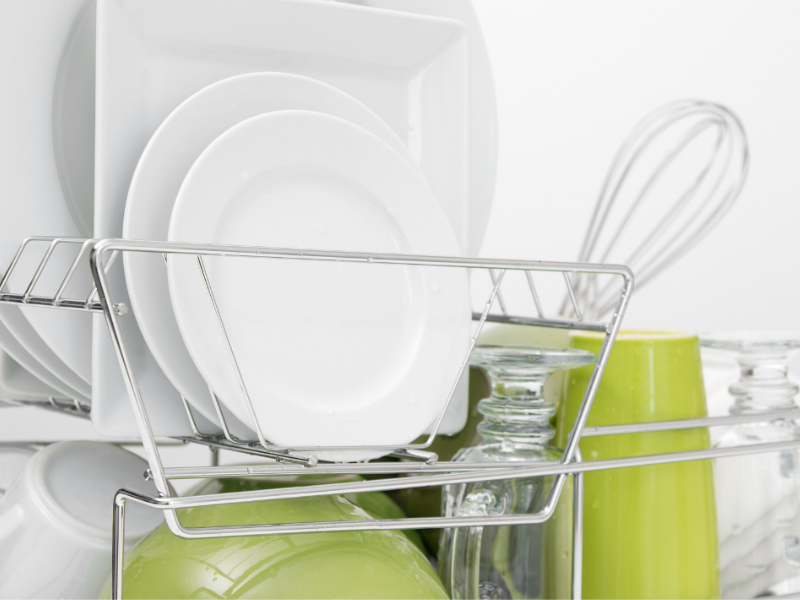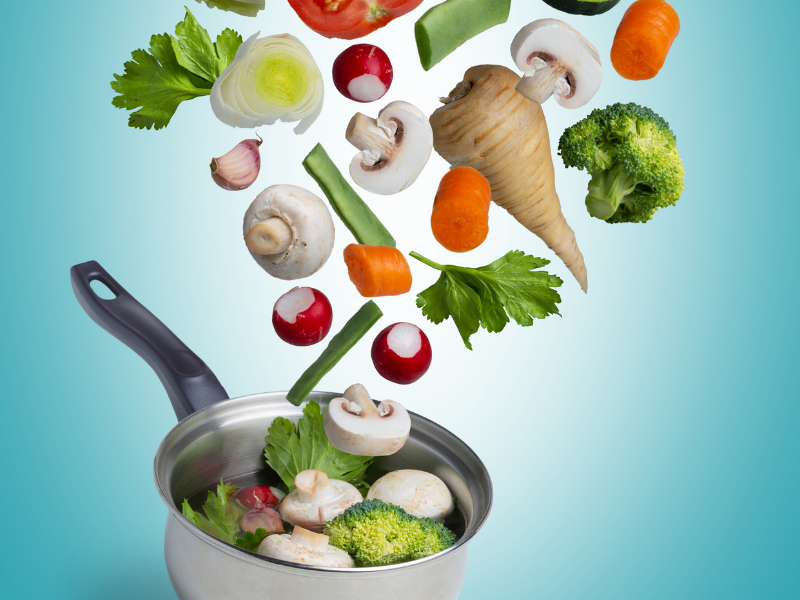Shopping for quality pots and pans can be overwhelming. You’ll want to do a little homework before investing in your first set of cookware. You’re going to want pots and pans that perform well to give you predictably great results.
Unpredictable is not fun in the kitchen. However, armed with a little knowledge you can confidently purchase pots and pans that will serve you well.
Your Pots and Pans Don’t Have To Be New
Your cookware doesn’t have to be new. In fact, you can likely find some great pieces at discount stores and outlets (i.e. Marshalls, TJ Maxx, Home Goods), thrift stores, estate sales, or hand-me-downs from family members. You are looking for a product that is sturdy and able to evenly distribute heat.
Let’s take a look at a few of the options and their features.
STAINLESS STEEL
Stainless steel pans can be a great option. They are sturdy, reasonably priced, easily cleaned, and require almost no maintenance besides prompt cleaning. However, they are not non-stick. So, for example, they wouldn’t be the best option for scrambled eggs. Also, because of the physical properties of stainless steel, it does not conduct heat well and can unevenly distribute it, resulting in hot spots. If you are aware of these factors and allow for them, cooking with stainless steel can be very successful.
- Strong and durable
- Resists rust
- Relatively easy to clean
- Reasonably priced
- Poor heat conductor
- Not non-stick
CAST IRON
Cast iron pans are also a great option. They are very durable and pretty budget friendly. Cast iron heats slowly and retains heat much longer than many other types of pans. You’ll want to keep this in mind when you cook with them. Because they retain heat so well, they can continue to get hotter even over a medium temperature setting. They require some upkeep, in that they need to be seasoned (rubbed with cooking oil and then baked to season the metal.) This prevents rust. If seasoned appropriately, the surface can be non-stick. A possible drawback for some may be that these pans are very heavy.
- Solid and durable
- Reasonably priced
- Retains heat well
- If seasoned, is non-stick
- Requires seasoning
- Can rust
- Heavy
HARD ANODIZED
Hard anodized cookware is aluminum cookware that has been treated so that the natural oxide layer builds up and creates a durable, nonreactive outer layer. This conducts heat much more evenly than regular aluminum. It is non-stick, durable, and easy to clean. Hard anodized pots and pans are typically pretty reasonably priced.
- Conducts heat well
- Durable
- Reasonably priced
- Easy to clean
NONSTICK POTS AND PANS
Nonstick cookware is treated with an engineered coating (Teflon) that resists sticking to it. This coating however, can be compromised by metal or sharp objects, high heat, or by harsh dishwasher detergents. Such cookware should always be hand washed. It should also be used over no hotter than medium heat and should not be heated when it is empty. Foods will not be browned as much as they would with other skillets. If nested, nonstick should be stored with a liner separating it from other pans. Once the coating becomes damaged, the pan should be replaced.
- Easy to clean
- Non-stick
- Must hand wash
- Easily scratched
COPPER
Copper cookware can a be a great choice, as it conducts heat well and provides even heat (less scorching). Professional kitchens often have copper cookware. It changes temperature more quickly than cast iron. However, it is a softer metal and can dent more easily. It also requires regular polishing. The metal will react with some acid containing foods and may change their color or taste. Copper cookware is often coated with other metals to minimize the drawbacks listed here. Copper cookware can be an excellent choice, but it is an expensive investment. I recommend educating yourself well before purchasing so that you will have successful results.
- Conducts heat well
- Changes temperature
- quickly
- Requires regular
- polishing
- Dents easliy
- Reacts with some foods
- changing color/taste
- Expensive
CLAD POTS AND PANS
Clad cookware is manufactured by bonding different types of metals together–stainless steel, aluminum or copper, and magnetic stainless steel (for use with induction cooktops). It is durable, easily maintained, easily cleaned, and tends to be pricier.
- Conducts heat well
- No polishing required
- Sturdy
- Nonreactive
- Easy to clean
- Expensive
You’ll want to be sure to get good quality pots and pans for the stovetop or the results of your hard work in the kitchen could be disappointing. Who has time for that?? Great cookware can serve you well for years. It’s worth doing a bit of research to find out what really works for you.



